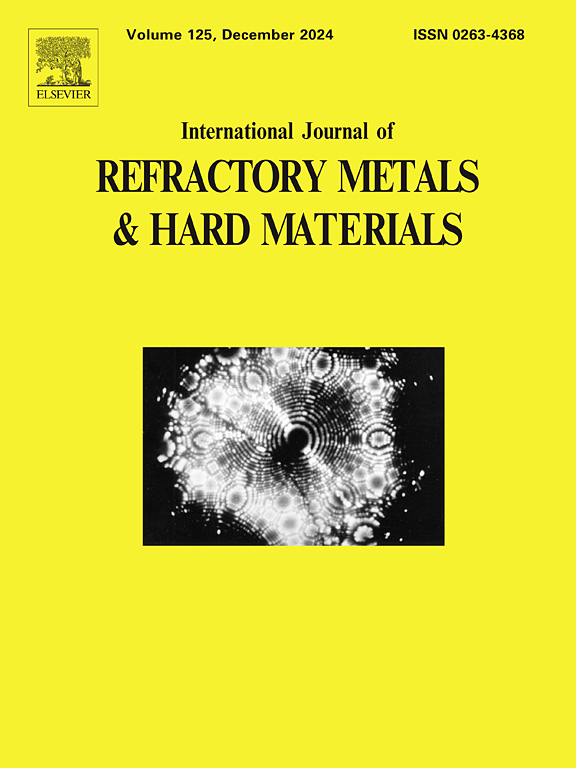Study on the in-situ generation of hard phases and microstructural and mechanical properties in Ni-WC/W2C cladding layers prepared by TIG arc
IF 4.2
2区 材料科学
Q2 MATERIALS SCIENCE, MULTIDISCIPLINARY
International Journal of Refractory Metals & Hard Materials
Pub Date : 2024-12-02
DOI:10.1016/j.ijrmhm.2024.106985
引用次数: 0
Abstract
Using the principle of in-situ generation, tungsten carbide particles were generated in-situ on 40Cr surfaces pre-coated with self-made powders by TIG arc with flux-cored wires, and the in-situ generation process of hard phases such as WC/W2C was systematically investigated. The macroscopic morphology and microstructure of the cladding layers were analyzed using optical microscopy (OM), scanning electron microscopy (SEM), energy spectrometry (EDS), and X-ray diffractometry (XRD), and the hardness and wear resistance of the cladding layer were tested. The results show that the in-situ grown WC exhibits a positive triangular shape in the two-dimensional plane. No defects such as porosity and cracks are seen in the cladding layer, and the hard phase mainly consists of WC/W2C, as well as carbides with three typical morphologies of dendrites, rods, and ring-block. With the combined effect of residual tungsten carbide particles and in-situ grown hard phase, the optimal hardness and wear volume of the cladding layer were 664.4 HV1 and 0.33 mm3, respectively, which were increased to about 3 and 45 times that of the substrate.
求助全文
约1分钟内获得全文
求助全文
来源期刊
CiteScore
7.00
自引率
13.90%
发文量
236
审稿时长
35 days
期刊介绍:
The International Journal of Refractory Metals and Hard Materials (IJRMHM) publishes original research articles concerned with all aspects of refractory metals and hard materials. Refractory metals are defined as metals with melting points higher than 1800 °C. These are tungsten, molybdenum, chromium, tantalum, niobium, hafnium, and rhenium, as well as many compounds and alloys based thereupon. Hard materials that are included in the scope of this journal are defined as materials with hardness values higher than 1000 kg/mm2, primarily intended for applications as manufacturing tools or wear resistant components in mechanical systems. Thus they encompass carbides, nitrides and borides of metals, and related compounds. A special focus of this journal is put on the family of hardmetals, which is also known as cemented tungsten carbide, and cermets which are based on titanium carbide and carbonitrides with or without a metal binder. Ceramics and superhard materials including diamond and cubic boron nitride may also be accepted provided the subject material is presented as hard materials as defined above.

 求助内容:
求助内容: 应助结果提醒方式:
应助结果提醒方式:


